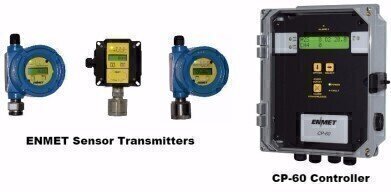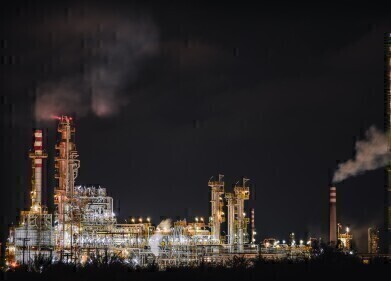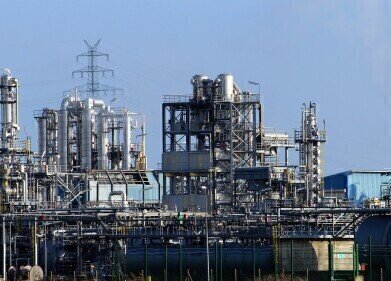Fixed Gas Detector
Fixed Gas Monitoring Sensors for Ambient Air Proper Selection and Placement
Nov 08 2017
The health and safety of personnel working in a potentially hazardous environment is an important concern for all employers. There are several key factors when assessing the need for Enmet’s fixed gas detection systems when monitoring ambient air. First, identify the toxic or combustible chemicals, gases or vapours that could be present and creating hazardous conditions in the area. Once these hazards are identified, important characteristics of each hazard can be obtained to help with proper selection and placement of Enmet’s fixed gas detection sensor transmitters and monitoring systems. These important characteristics include TWA (time-weighted average), IDLH (immediately dangerous to life and health) value, LEL (lower explosive limit) value, UEL (upper explosive limit) value and density of chemical versus density of air, which helps determine where to mount the sensors.
Once this information is obtained, Enmet’s Sales Team can help you determine which of their fixed gas monitoring systems will work best for your application. The detailed information will also be useful in determining which sensors should be used, span calibration values and alarm point settings, and proper sensor placement (near ceiling, near floor or in the breathing zone).
Enmet’s laminated pocket size guide is a great tool that helps provide these answers for some of the most common toxic and combustible chemicals.
Digital Edition
IET 34.2 March 2024
April 2024
Gas Detection - Biogas batch fermentation system for laboratory use with automatic gas analysis in real time Water/Wastewater - Upcycling sensors for sustainable nature management - Prist...
View all digital editions
Events
Apr 30 2024 Melbourne, Australia
Apr 30 2024 Birmingham, UK
May 03 2024 Seoul, South Korea
May 05 2024 Seville, Spain
May 06 2024 Minneapolis, MN, USA



















